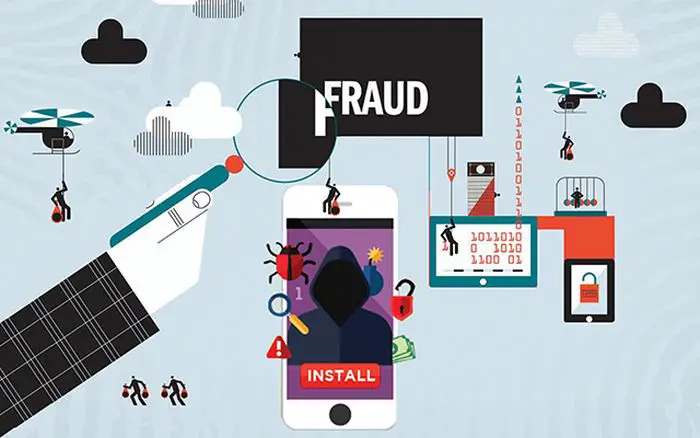Cybersecurity: Identifying Fraud Is the First Step in Stopping It

Tough economic times tend to bring out fraudsters in larger numbers. People looking to make a quick buck find easy targets and exploit them. That being the case, a cybersecurity priority in the midst of what is turning into a global recession requires rooting out fraud. To do that, you first need to be able to identify it.
Fraud takes many forms in the business world. Phishing attempts target companies that tend to be careless about data protection. Ad fraud goes after online advertisers who prefer the pay-per-click (PPC) model. Authorized push payment fraud targets customers rather than businesses, mainly by convincing them to make payments to entities they have been convinced to trust.
Click fraud is incredibly popular because it is so easy to pull off. Few online advertisers make the effort to root it out and stop it. According to the experts behind the Fraud Blocker click protection service, far too many advertisers are content to accept that a certain volume of their clicks will be fraudulent.
How Click Fraud Works

It has been estimated that click fraud alone will cost online advertisers upwards of $100 billion in 2024. The basic premise behind it is relatively simple: make money by selling PPC ads you can turn around and click incessantly to generate revenue. In order to make it work, a scammer needs to set himself up as an ad publisher. Once that’s done, it’s a matter of finding victims.
A fraudster might represent himself as an affiliate marketer. He sets up fake websites on which he publishes PPC ads. Then he generates as many clicks as he can with the understanding that every click equals a charge to his victim.
Fake clicks are generated in numerous ways:
- Bots – Click bots are automated software tools with a single purpose: seek out and click PPC ads. A single bot can be replicated and placed on innumerable computers or mobile devices through malware.
- Click Farms – Some scammers dispense with click bots in favor of actual humans hired to click on ads all day. They establish click farms in locales where labor is cheap and regulatory enforcement nonexistent.
- Ad Stacking – Ad stacking is the practice of creating multiple ads that are too small to see with the naked eye. They are all stacked on top of a legitimate ad so that, when the legitimate ad gets a click, all the fake ads also get clicked.
- Accidental Clicks – Generating accidental clicks is a form of mobile click fraud that involves creating tiny ads that are placed in locations likely to be accidentally tapped by mobile users. Accidental taps register as clicks even though the user’s mobile device is not redirected.
This is by no means a conclusive list of the many ways click fraud is perpetrated. But it is a fair representation that should give online advertisers a good idea of what they are up against. Rooting out the fraud requires tracking strategies and software capable of identifying fake clicks, suspect IP addresses, etc.
How Phishing Attempts Work

Phishing is the practice of using email, malware, and other means to harvest sensitive information from unsuspecting victims by getting them to voluntarily submit such information. In a simple scenario, a fraudster sends an email impersonating a legitimate contact the recipient would expect to hear from. The email requests certain information from the recipient.
As a means of perpetrating fraud, phishing has been around for more than a decade. Scammers continue to employ it because it still works, despite ongoing corporate efforts to educate employees. Not only that, but scammers have scaled up their phishing activities considerably.
Scaled Phishing Is Like Casting a Net
A simple phishing exercise is like throwing a single line in the water and hoping a fish takes the bait. Scaled phishing is like throwing a huge net in the water in hopes of trapping anything and everything that swims by. Some of what you catch you can keep, but there are always the ones you have to throw back.
Scammers have learned how to deploy phishing attempts on a grand scale. What’s worse, Microsoft uncovered something a couple of years ago that shocked the cybersecurity world: a phishing-as-a-service platform that was selling complete phishing kits on the dark web. The kits included everything from email templates to stolen credentials that allowed scammers to log on to compromised networks with impunity.
How APP Fraud Works

Yet another type of fraud that seems to increase during tough economic times is authorized push payment (APP) fraud. This form of fraud preys on customers by encouraging them to make real-time payments for products and services they will never get. It is successful because fraudsters can get in and out long before their activities are detected.
A popular form of APP fraud targets financial services, particularly individual investments. Scammers impersonate organizations or entities offering what appear to be legitimate investment opportunities. They are essentially online con artists capable of convincing people to part with their money in exchange for an opportunity to invest in the next big thing.
One of the keys to successfully pulling off APP fraud is impersonating legitimate organizations. As a result, customers are not the only ones victimized here. So are the organizations being impersonated. Their reputations are damaged even as scammers steal from their potential customers.
Know Your Industry’s Fraud
The three types of business fraud discussed in this post do not even scratch the surface of what is a serious cybersecurity problem in the modern era. There are so many other ways to perpetrate fraud that a single post could not do them all justice. The lesson for business owners is clear: know your industry’s fraud. In other words, learn the types of fraud normally perpetrated in your industry.
Armed with that knowledge, learn how to identify fraud. If you know what it looks like, you can stop it in its tracks. The alternative is something you don’t really want to think about.
